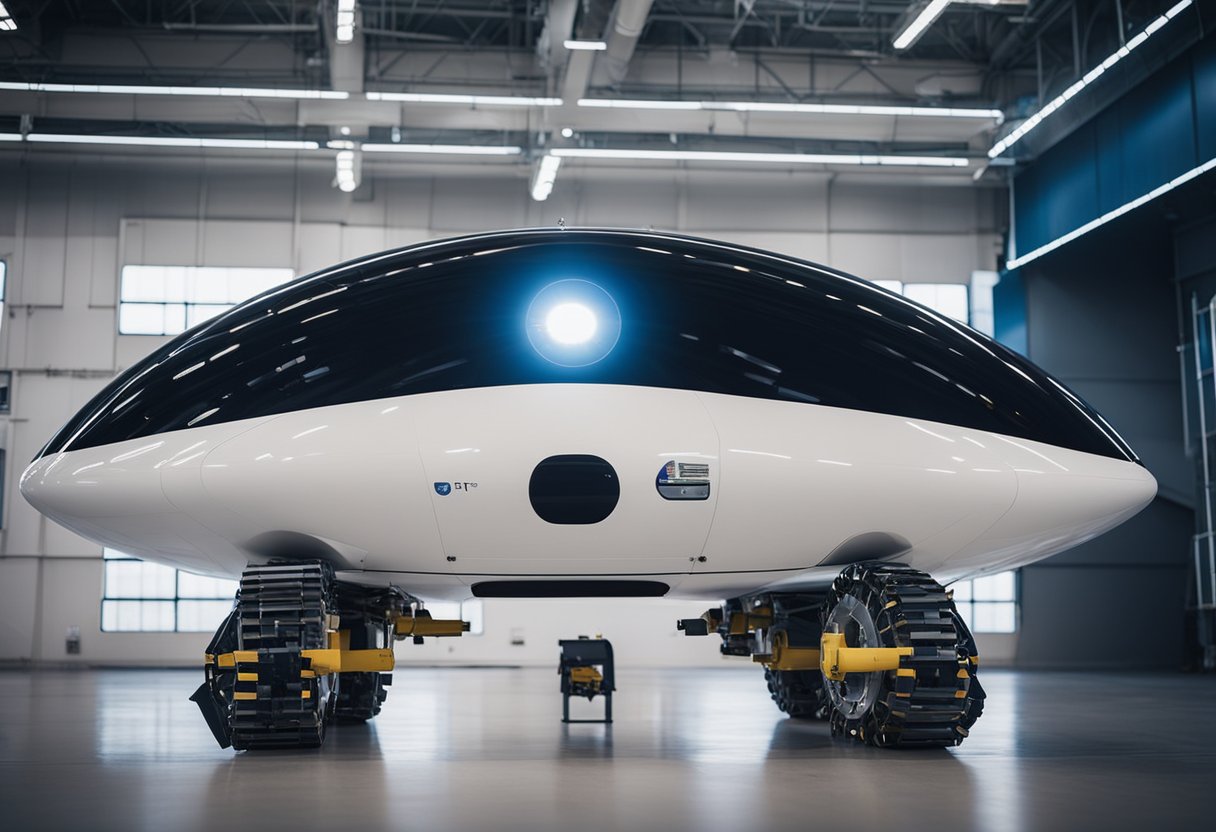
Space Tourism Vehicle Safety Standards – As we gaze skywards, space tourism looms on the horizon as a thrilling yet uncharted domain for adventure seekers. With companies inching closer to making commercial space travel a reality, the emphasis on safety standards for space tourism vehicles becomes paramount. We understand the excitement that accompanies the thought of venturing beyond Earth’s atmosphere is palpable, but it is our responsibility to advocate for stringent safety measures that protect space tourists.
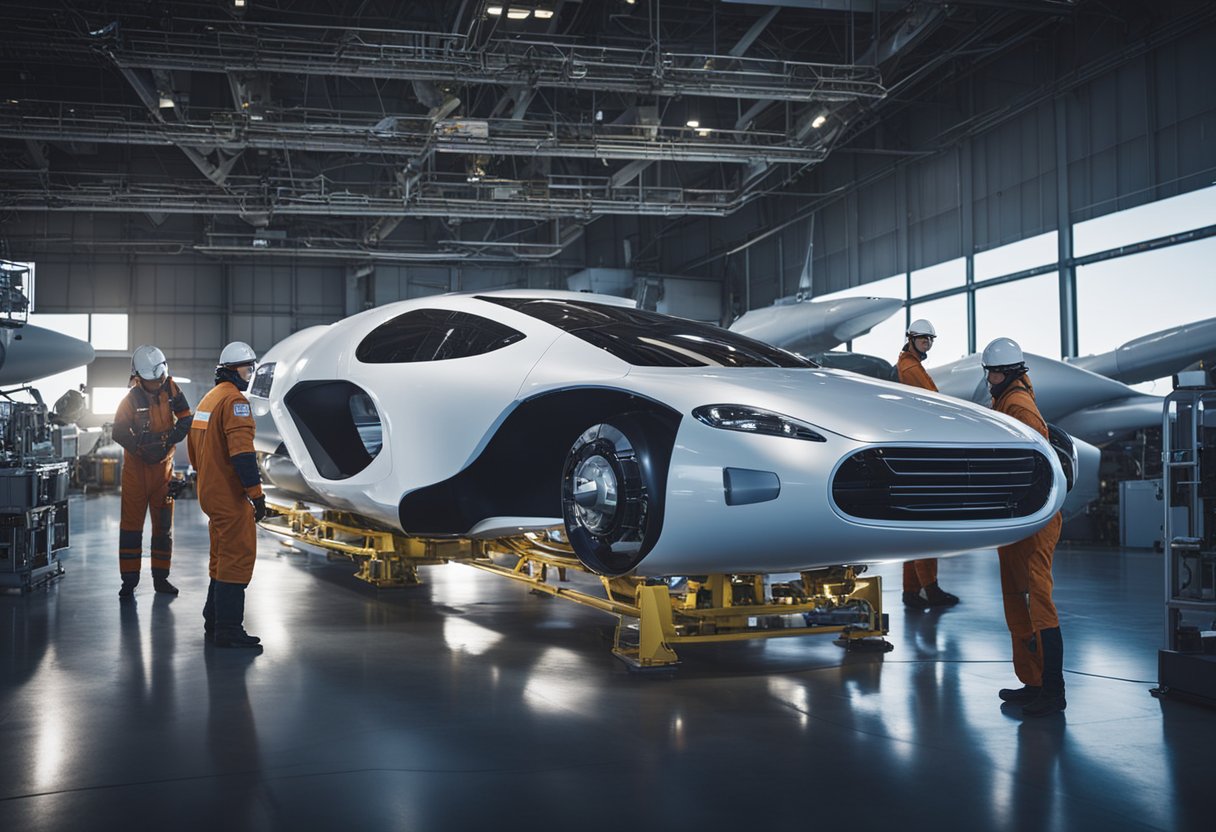
In crafting the blueprint of space voyages, we recognise the need to establish a robust regulatory framework for the burgeoning industry. This involves not just the vehicles themselves but also encompasses a holistic approach to risk management and operational considerations. Ensuring that safety protocols are followed diligently and environmental sustainability concerns are addressed reflects our commitment to a secure and responsible expansion of human presence into space.
At the core of these developments lie the key industry stakeholders, whose experiences and expertise are crucial in shaping safety standards while fostering innovations. We must also consider the medical and legal implications, as well as economic impacts, to build an industry that is both exhilarating and safe for tourists.
The safe development of space tourism hinges upon stringent regulatory frameworks established by governmental entities. These frameworks are essential in maintaining the highest safety standards and protecting all stakeholders involved in commercial space travel.
The Federal Aviation Administration (FAA), specifically the Office of Commercial Space Transportation (AST), is the pivotal government body that oversees the commercial spaceflight sector. We recognise their authority in administering a comprehensive set of rules and protocols to ensure public safety and the protection of national security and foreign policy interests during commercial launch or re-entry activities.
Licensing is a critical component in the FAA and AST’s regulatory purview. Commercial space companies must secure proper licenses for launch and re-entry, in addition to permits for experimental or non-recurring missions. These licensing procedures not only ensure adherence to safety and environmental benchmarks but also verify that operators are adequately insured for potential third-party liabilities.
Our collective focus on safety regulations underscores the FAA’s role in establishing and enforcing robust frameworks. Regulations encompass vehicle design, construction standards, and operational protocols to mitigate risks. The importance of ongoing safety measures is further highlighted by the FAA’s framework for commercial space travel, which is formulated to evolve with the industry’s technological advancements and operational experiences.
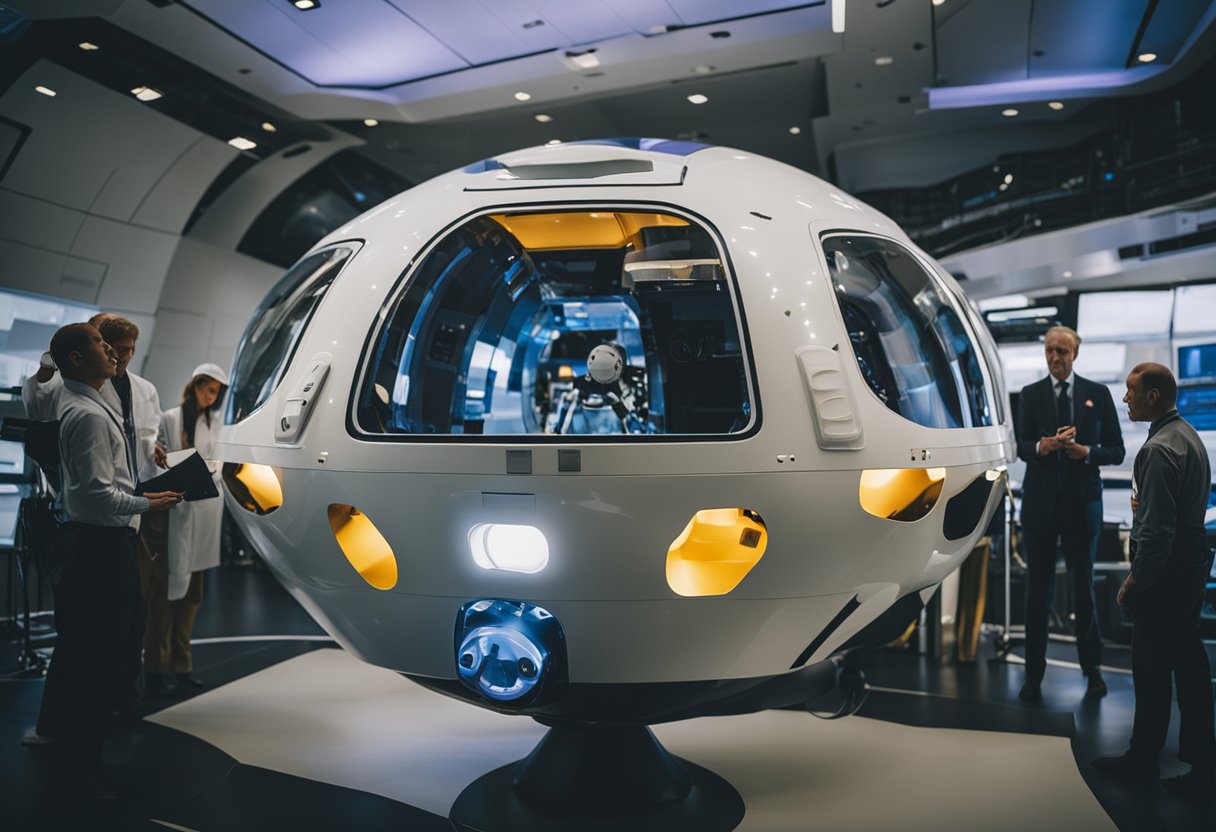
In our journey to the stars, the advancement and robustness of space tourism vehicles are pivotal. With companies like SpaceX and Virgin Galactic at the forefront, we’re witnessing a new era where the public can gaze upon the Earth from above.
The design and engineering of space tourism vehicles such as the SpaceShipTwo and the Crew Dragon capsule are essential to the success of commercial space travel. Our design priorities include maximising safety and enhancing the overall experience for space tourists. Crucial design features range from redundant systems to ensure vehicle integrity to comfortable seating for passengers experiencing microgravity.
Safety systems in space tourism vehicles are non-negotiable and cover a broad scope of considerations from vehicle reliability to emergency protocols. Our vehicles are equipped with multiple independent life support systems and automated hazard detection to handle the rigours of space travel.
We uphold a strict informed consent process for all prospective space tourists, ensuring they are fully aware of the risks associated with space travel. This process involves thorough briefings and agreements that are in accord with Space Future – A Draft of Safety Standard for Designing Space Tour Vehicles. It’s our duty to make sure passengers understand the potentialities of spaceflight before they board. We provide detailed descriptions of all safety protocols and systems in place on the spacecraft, including the unique features of both the SpaceShipTwo and Crew Dragon capsule.
For further insights into the space tourism industry and safety measures, you can visit SpaceVoyageVentures.com, a platform that offers extensive information on current and future space tourism endeavours.
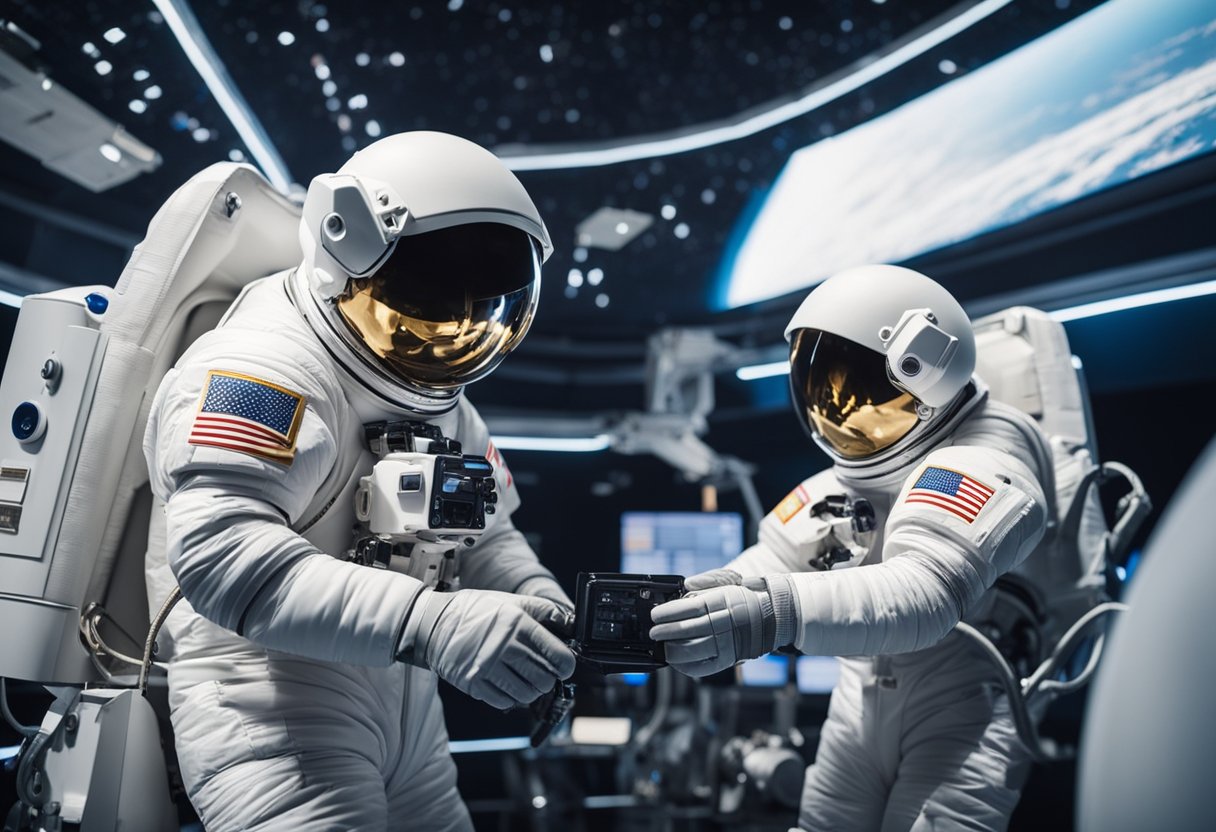
In the emerging realm of space tourism, industry stakeholders encompass both pioneering private companies and established space agencies. Collectively, they shape the safety standards that govern this nascent industry.
Private enterprises like SpaceX, Blue Origin, and Virgin Galactic are at the forefront of space tourism, each pursuing their proprietary technology and safety protocols. We see SpaceX advancing with vehicles designed both for orbital and suborbital travel, pushing the envelope in spacecraft design and passenger safety. On the other hand, Blue Origin is known for its New Shepard suborbital system, building a reputation on step-by-step testing to ensure safety. Virgin Galactic focuses on a unique air-launch approach, with rigorous safety measures tailored to their suborbital spaceplane, VSS Unity.
Space agencies like NASA traditionally lead in space exploration safety standards, which are now instrumental for the space tourism industry. These agencies share insights from decades of spaceflight experience, which are invaluable for private companies to integrate into their operational protocols. With a comprehensive understanding of space travel risks, agencies provide guidelines that help structure the industry’s regulatory environment.
We recognise that aligning these stakeholders is crucial for shaping a consensus on the global safety benchmarks necessary to protect both space tourists and the broader space environment. It’s this collaborative effort that will define the success and sustainability of space tourism as we look ahead.
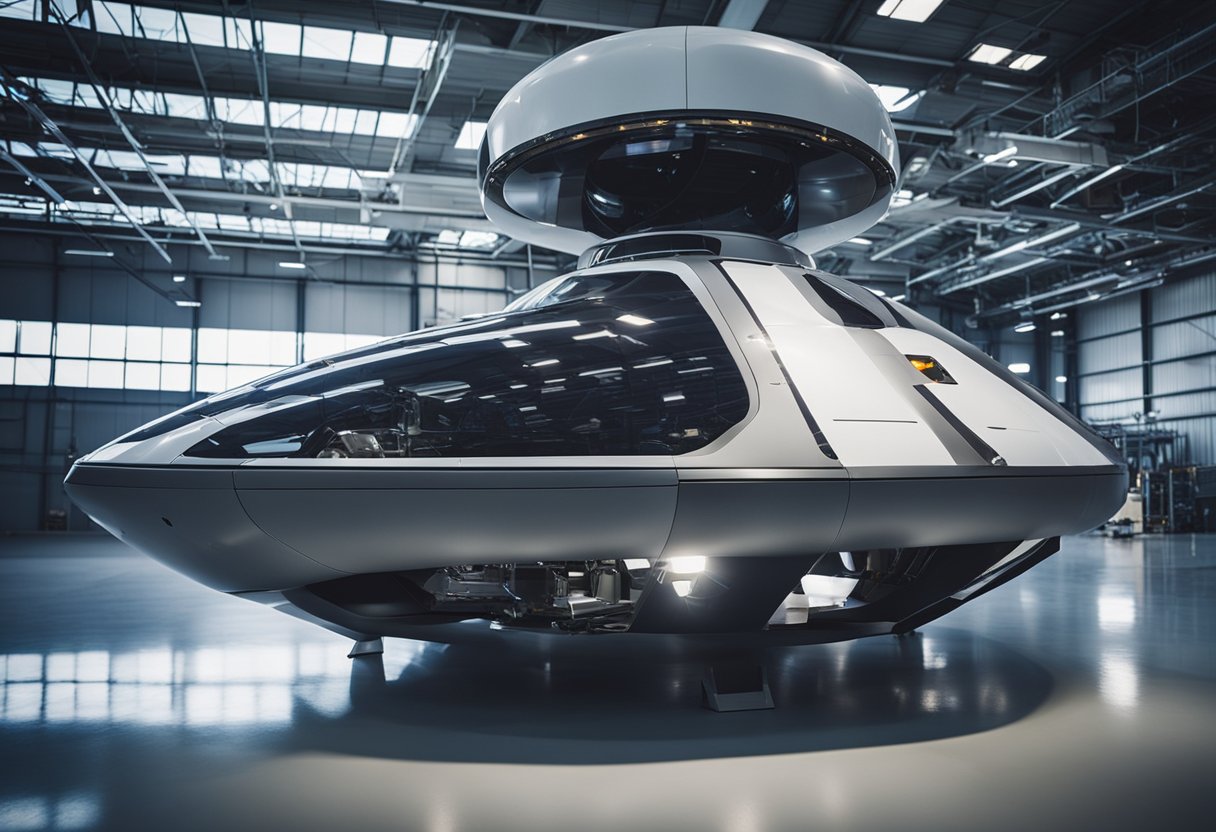
In the burgeoning industry of space tourism, we rigorously address safety and risk management to mitigate the inherent perils associated with space travel. We are committed to adhering to the highest safety standards, ensuring robust emergency procedures are in place, and transparently dealing with liability issues.
When an accident occurs, it is our responsibility to conduct thorough investigations to determine the cause. The National Transportation Safety Board (NTSB) is often involved in these investigations to provide an unbiased analysis. Insights gained from mishaps are crucial to refining safety guidelines and preventing future incidents.
Should any emergencies arise, well-practiced procedures are our first line of defence. We design our emergency protocols meticulously, following international safety standards, which are rehearsed regularly with space crew and tourists to ensure everyone is prepared for potential risks.
In the event of an accident, understanding the liability and legal considerations is essential. Space tourism ventures, like SpaceVoyageVentures.com, must navigate complex legal landscapes, often involving waivers signed by tourists acknowledging the risks. Moreover, operators are required to carry insurance to cover a range of liability issues.
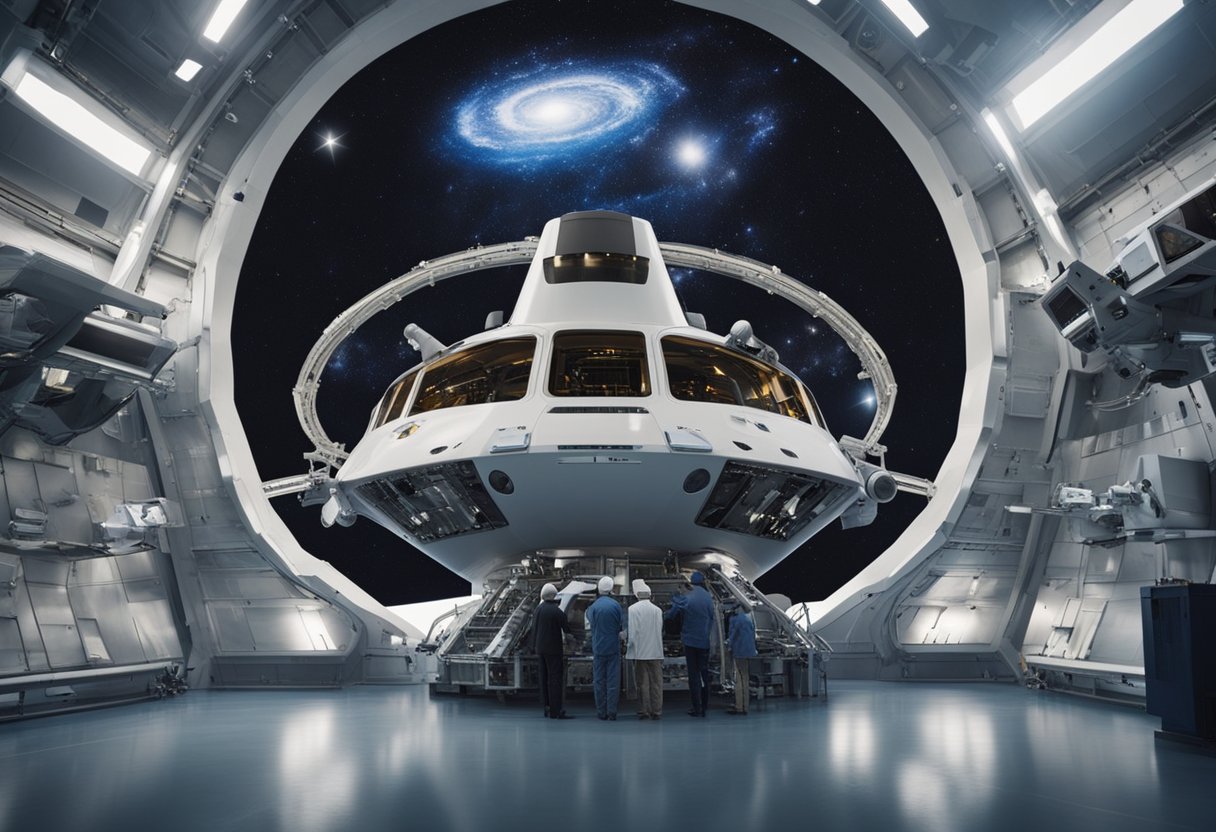
In space tourism, the margins for error are minimal, and operational efficiency is critical. We focus on rigorous training programmes and well-defined launch procedures to ensure the safety of passengers and crew alike.
Our astronauts undergo a comprehensive training regimen that familiarises them with the spacecraft’s systems and emergency protocols. We emphasise both theoretical and practical modules, including simulation exercises that cover various scenarios, from nominal operations to potential emergencies. This ensures that when faced with the realities of a rocket launch or managing a space shuttle, our crew are prepared to execute their duties with precision.
For a successful rocket launch, coordination among various teams is crucial. We’ve established strict procedures that guide operations from countdown to lift-off. Each launch sequence is meticulously planned and rehearsed, with real-time monitoring to manage any contingencies. Similarly, reentries demand our unwavering attention to trajectory calculations, thermal shielding integrity, and communication protocols to ensure a safe return to Earth. Our operational handbook for both rocket launches and space shuttle reentries includes detailed checklists and contingency plans that are revised and refined following each mission.
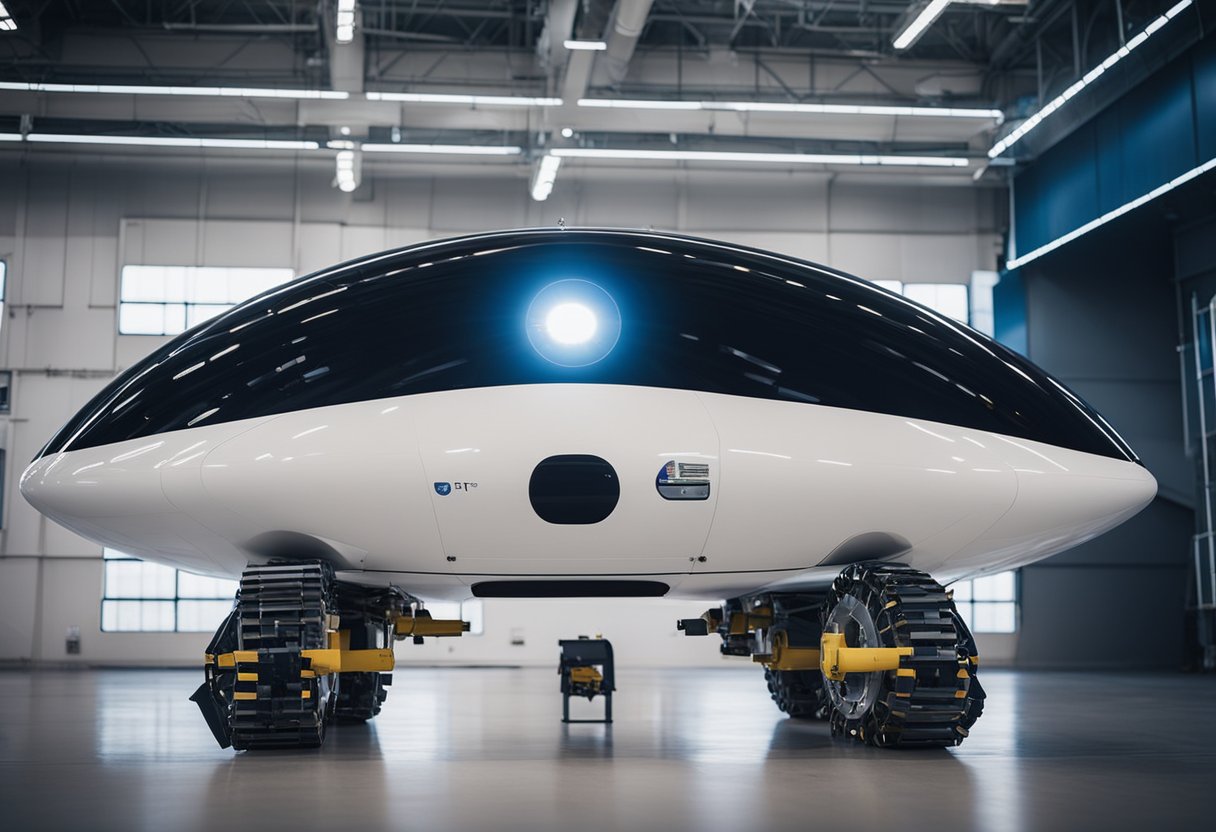
As we venture into the era of space tourism, it’s crucial for us to address the environmental and sustainability challenges that come with it. Our focus is on the management of space debris and the emissions resulting from space flights—key areas where the impact on Earth and outer space must be responsibly managed.
Space debris is a growing concern in the field of aerospace. Every launch contributes to the clutter of objects ranging from defunct satellites to fragments from collisions. It is essential for us to rigorously follow best practices in debris mitigation, such as de-orbiting spacecraft at the end of their lifetime and avoiding the abandonment of spent rocket stages.
The emissions from rocket launches are composed of various gases and particles, including carbon dioxide, water vapour, and nitrogen compounds. These launches are estimated to emit between 200 to 400 tons of carbon dioxide per flight, which is significant considering the small number of passengers on board space tourism vehicles as compared to commercial airliners. At SpaceVoyageVentures.com, sustainability is woven into our narrative, stressing the need for cleaner rocket technologies and fuels to reduce the environmental footprint of our journey into space.
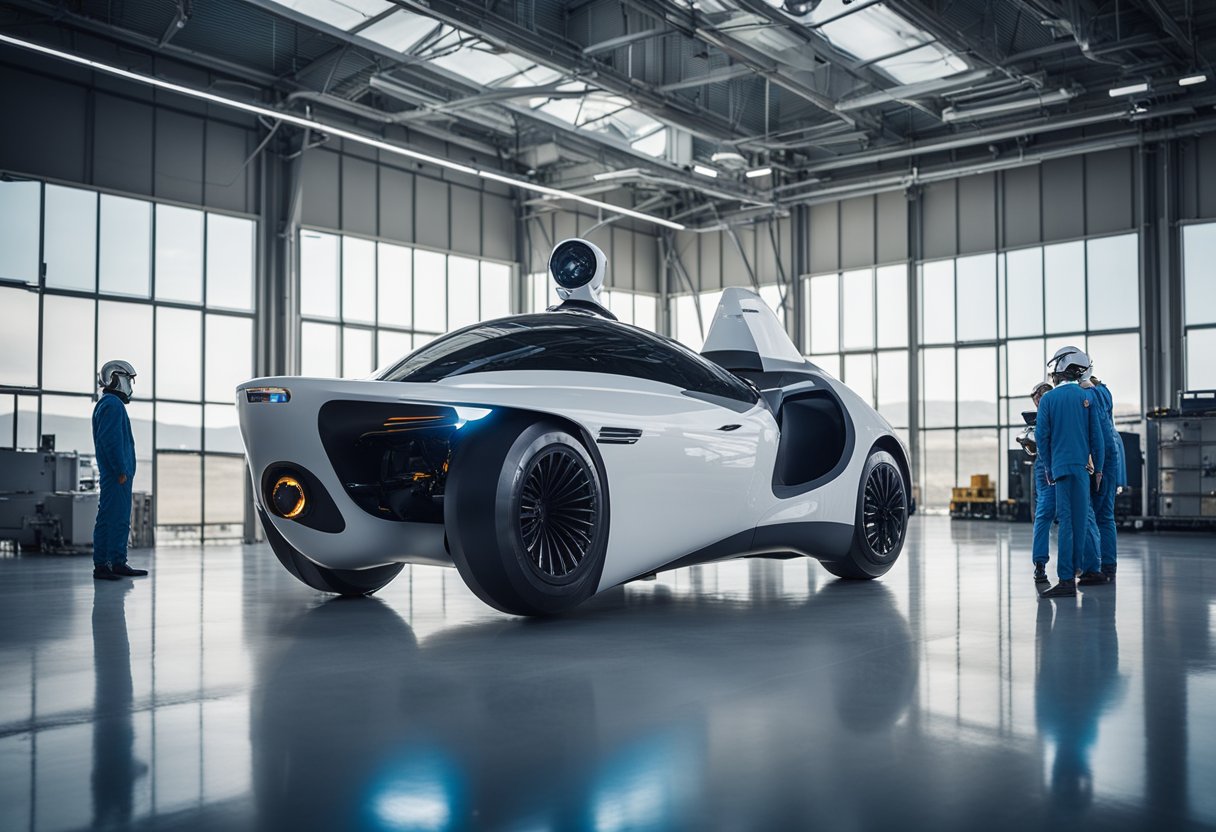
We’re witnessing an epoch where the space tourism industry is transitioning from a dream to reality, signifying substantial economic potential and heralding an era of commercial suborbital and orbital travel.
The space tourism industry is currently in its nascent stages with a few players offering suborbital experiences. Companies such as Virgin Galactic and Blue Origin have successfully demonstrated their capabilities, with Virgin Galactic already flying a full crew into space. The success of such missions indicates a burgeoning market, with interest from a high-net-worth demographic eager for unique experiences. These initial forays, while few, have paved the way for further development and fostered consumer interest. Information is continually compiled on platforms such as SpaceVoyageVentures.com, charting current and soon-to-be-realised opportunities in space tourism.
Looking ahead, the growth of the space tourism market is projected to expand significantly as technological advancements lower costs and increase safety standards. The viability of the market hinges on sustainable business models, which are being cultivated during the industry’s ‘learning period’ as noted in the CRS Reports on The Future of Space Tourism. Industry experts anticipate a wider audience with disposable income venturing into space once it becomes more accessible. It’s not only leisure that drives growth, but also the inclination towards commercial opportunities like private research and educational endeavours in space. This projected expansion has the potential to foster new industries and services catered for space farers.
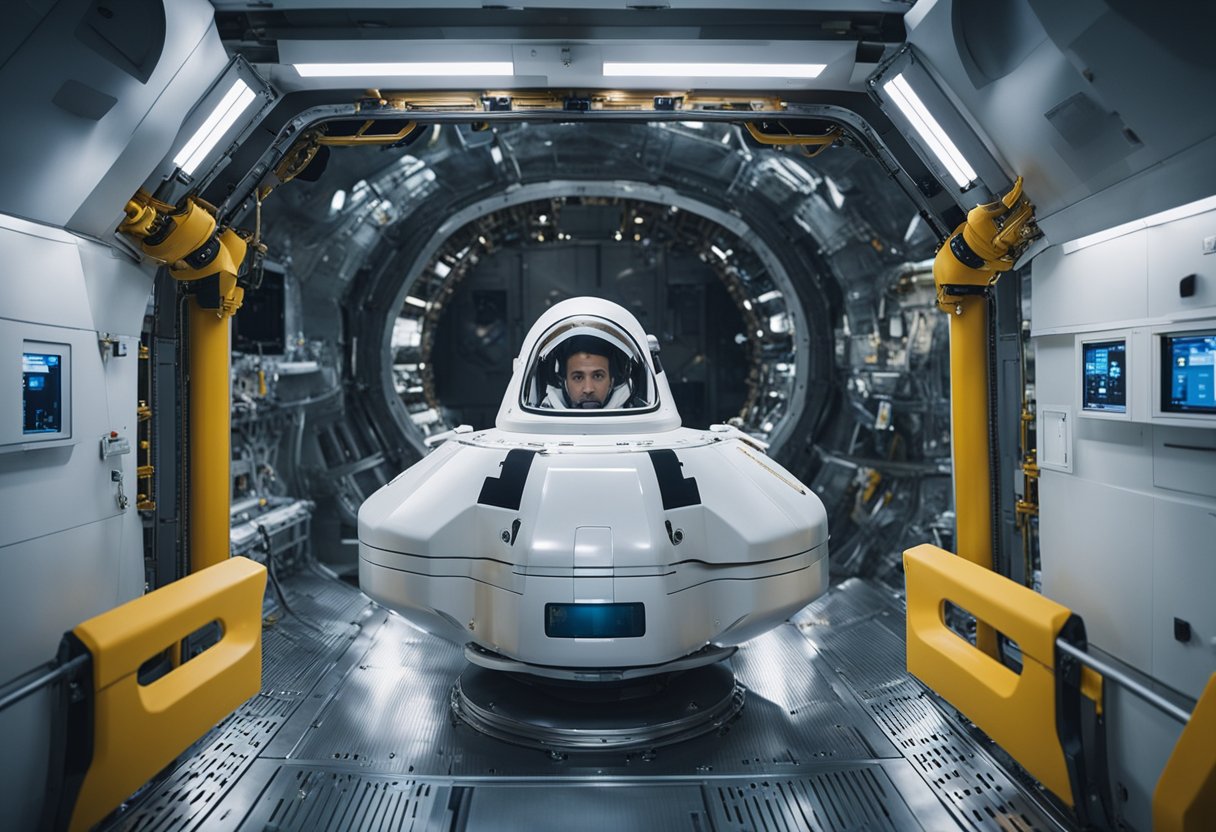
In space tourism, the well-being of passengers is paramount. We must address the unique challenges posed by the space environment, such as microgravity and radiation, which have significant implications on health and safety. Our screening and preventive measures are designed to protect space tourists from these risks.
We conduct thorough medical screening for all potential space tourists to ensure they are fit for the journey. This includes assessing cardiovascular health, bone density, and overall physical fitness. Our screening process is designed to identify any conditions that could be exacerbated by the space environment, thereby ensuring the safety of space tourists.
Our bodies are highly adapted to Earth’s gravity, and our research has clearly documented the effects microgravity has on humans. It can lead to muscle atrophy and bone loss. To mitigate these health issues, we have developed countermeasures such as resistive exercise equipment used during the flight. This ensures that space tourists remain healthy during and after their experience.
We are fully aware of the inherent risks, such as exposure to radiation during spaceflight. Our vehicles are equipped with shielding, and we follow protocols that limit the time spent in higher radiation zones, like the South Atlantic Anomaly. We strive for the highest medical and safety standards, paralleling the advances in technology that make space tourism possible. Visit SpaceVoyageVentures.com for detailed insights into the health and safety considerations of space tourism.
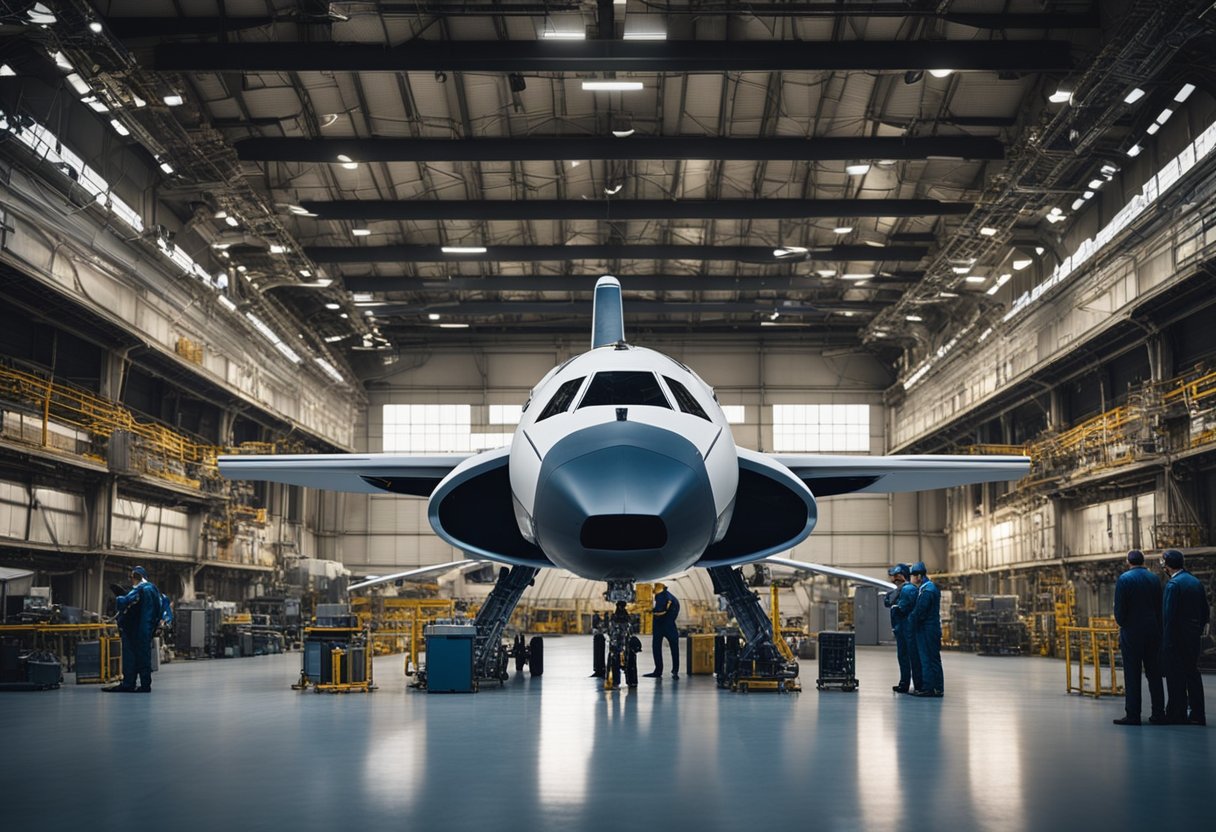
In the evolving industry of space tourism, we must carefully navigate a complex web of legal and insurance considerations. Ensuring the safety of passengers aboard spacecraft requires a robust framework, which is underpinned by stringent safety standards and insurance policies.
Commercial ventures into space tourism necessitate a specialised insurance market. To shield companies from liability and protect passengers, spacecraft and passenger insurance is pivotal. The insurance industry has adapted to new risks emerging with space tourism, creating policies to minimise and mitigate risks. Passengers aboard these spacecraft need to be aware that, unlike common modes of transport, space travel involves unique dangers and an insurance sector that is still developing. Licenses and permits, mandated by entities such as the Federal Aviation Administration in the United States, further complicate the landscape, intertwining with safety requirements to form a tightly regulated framework.
When addressing international treaties and liability, we contend with a plethora of legalities surpassing national boundaries. As we reach beyond our planet, international coordination becomes crucial to ratify standards ensuring safety and liability measures. The Outer Space Treaty, for instance, establishes a foundation where states bear liability for damage caused by their space objects. In practice, this means space tourism operators would need strong liability coverage to accommodate the potential for international disputes. Within this complex web, operators also engage with protocols around the International Space Station, navigating a distinct legal realm shaped by the nations involved.
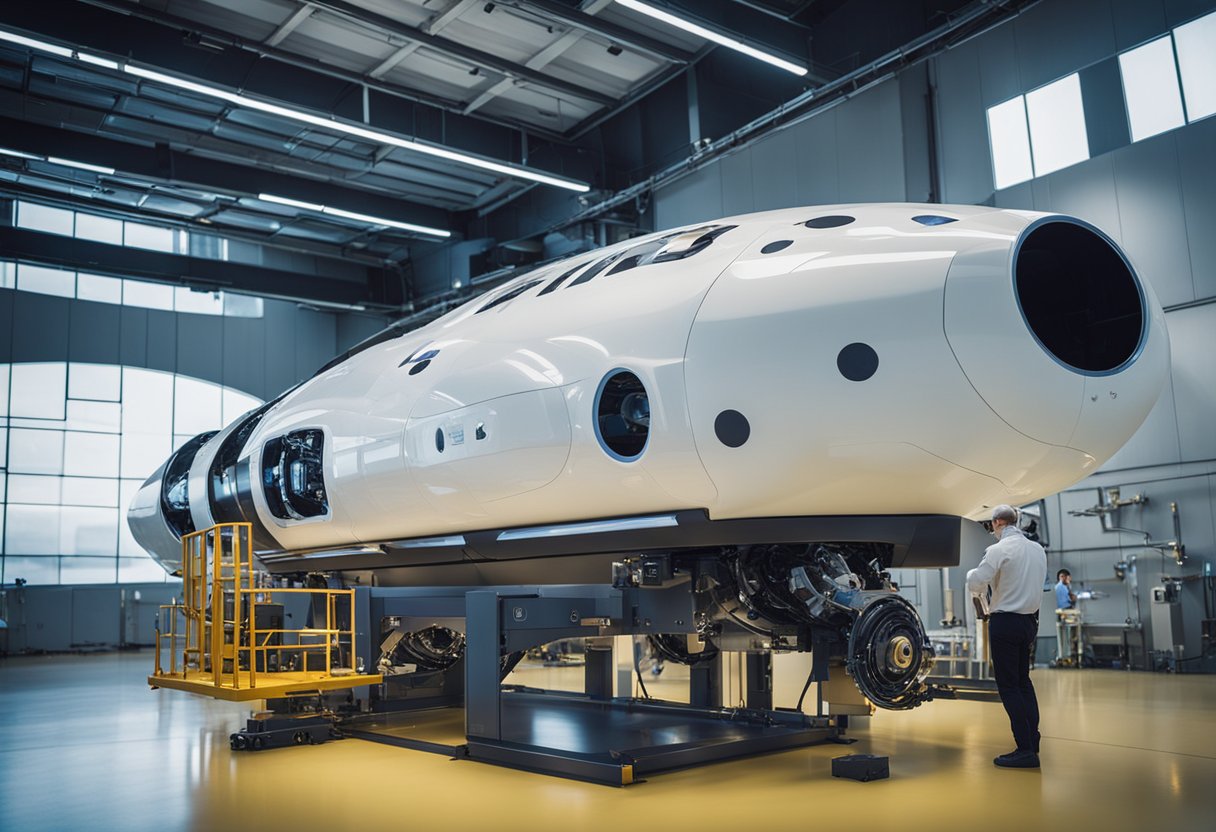
As we explore the ramifications of space tourism vehicle safety standards on the economy and the aerospace sector, we focus on two essential aspects: the impact on the aerospace sector and the commercial benefits derived from these ventures.
The introduction and enforcement of vehicle safety standards in the space tourism industry have a profound effect on the aerospace sector. Rigorous safety regulations compel manufacturers like Boeing to evolve and innovate, ensuring that vehicles meet or exceed all requirements. This regulatory environment stimulates research and development, leading to advancements in materials science, engineering, and technology. The Air Force and other military agencies often benefit from these developments, as they can apply new innovations to their own aerospace programs.
The economic impact of commercial space transportation cannot be understated. With companies entering the commercial spaceflight industry, there is an influx of investment and job creation. Growth in this sector translates to a broader economic benefit, including increased demand for skilled labour, which bolsters the job market.
Moreover, companies engaging in space tourism are expected to generate significant revenue streams, especially as ventures move from the conceptual phase to reality. The presence of online platforms like SpaceVoyageVentures.com indicates the burgeoning interest and potential profitability of space tourism, highlighting journeys available or soon to be available for the public. The expansion of commercial offerings in this sector could position space tourism as a lucrative component of commercial space transportation, provided that safety standards continue to be met and instil confidence in prospective tourists.
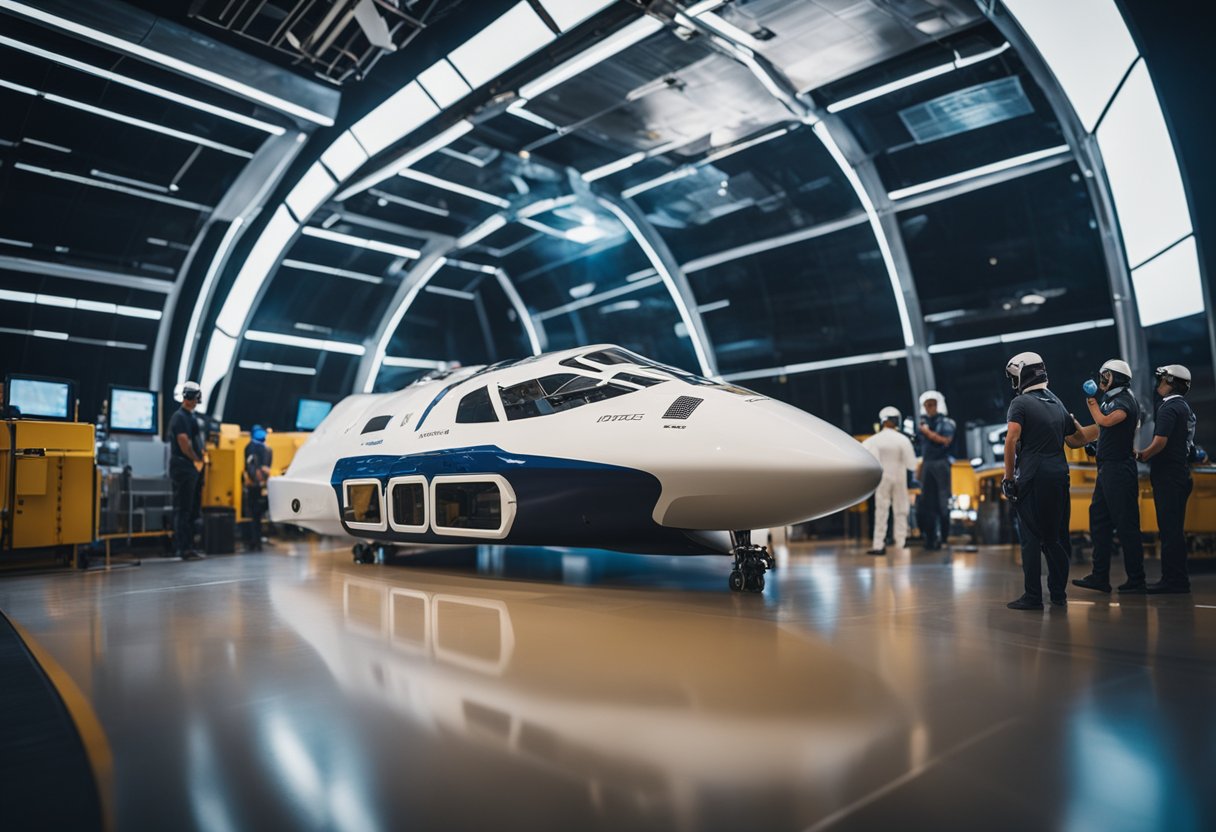
In the realm of space tourism, stringent safety measures are paramount, with operator and crew experience playing a crucial role. We recognise that proficiency in handling spacecraft operations is non-negotiable, and we make no compromises when it comes to the training programs and in-flight operations.
Our astronauts undergo comprehensive training programmes designed to prepare them for the demands of human space flight. These programmes are not only based on the rigorous standards set by NASA astronauts but also tailored to the specific spacecraft they will be operating. A major component of this training includes simulations that replicate the space environment, enabling the crew to practise and master operational procedures before the actual flight. These simulations cover a wide array of scenarios, from routine operations to emergency responses, ensuring our team is prepared for all eventualities.
We stress the importance of in-flight operational experience. Our pilots and crew members must demonstrate proficiency in real-life space flight operations to earn their place on our missions. This hands-on experience is vital in mitigating the inherent risk associated with space travel. Beyond simulations, we also value the insights and expertise brought by individuals who have participated in previous missions, as their practical knowledge contributes significantly to enhancing our operational standards and overall mission success.
With these meticulous preparations, we work tirelessly to uphold the highest safety standards for our programmes, aspiring to make space tourism a reality for more people. Our approach at SpaceVoyageVentures.com is grounded in proven training methods and a steadfast commitment to operational excellence.

We’ve compiled essential information regarding the safety standards and protocols for space tourism, shedding light on how the industry seeks to protect its passengers.
Safety protocols for space tourism are stringent and must adhere to similar rigorous standards as traditional aeronautics. Tourists are subject to comprehensive training that includes handling potential on-board emergencies and acclimatising to the conditions of space.
Space tourists are protected through the use of meticulously engineered spacecraft, designed to withstand the harsh environment of space. These vehicles are equipped with life support systems, as well as redundancy in critical components to safeguard against failures.
Commercial space flights have emergency protocols that include the capacity for abort missions, safe re-entry procedures, and medical support. Crews are well-trained to manage a variety of potential in-flight emergencies, ensuring a coordinated response.
The Federal Aviation Administration (FAA) oversees the commercial space travel industry, ensuring that companies obtain the necessary licenses and permits, and comply with safety standards to carry passengers.
The US government, through the FAA, certifies commercial space vehicles by ensuring that they meet strict safety criteria before issuing licenses for operation. This process involves a thorough examination of the vehicle’s design, construction, and rigorous testing of its systems and safety features.
In the past two years, there have been significant technological improvements in space vehicle safety, including advanced materials for better thermal protection, improved life support systems, and enhanced computer systems for monitoring vehicle health.